LG OLED G5 review: TV of the year?
LG's brightest-ever OLED TV is an instant winner – with some AI oddities

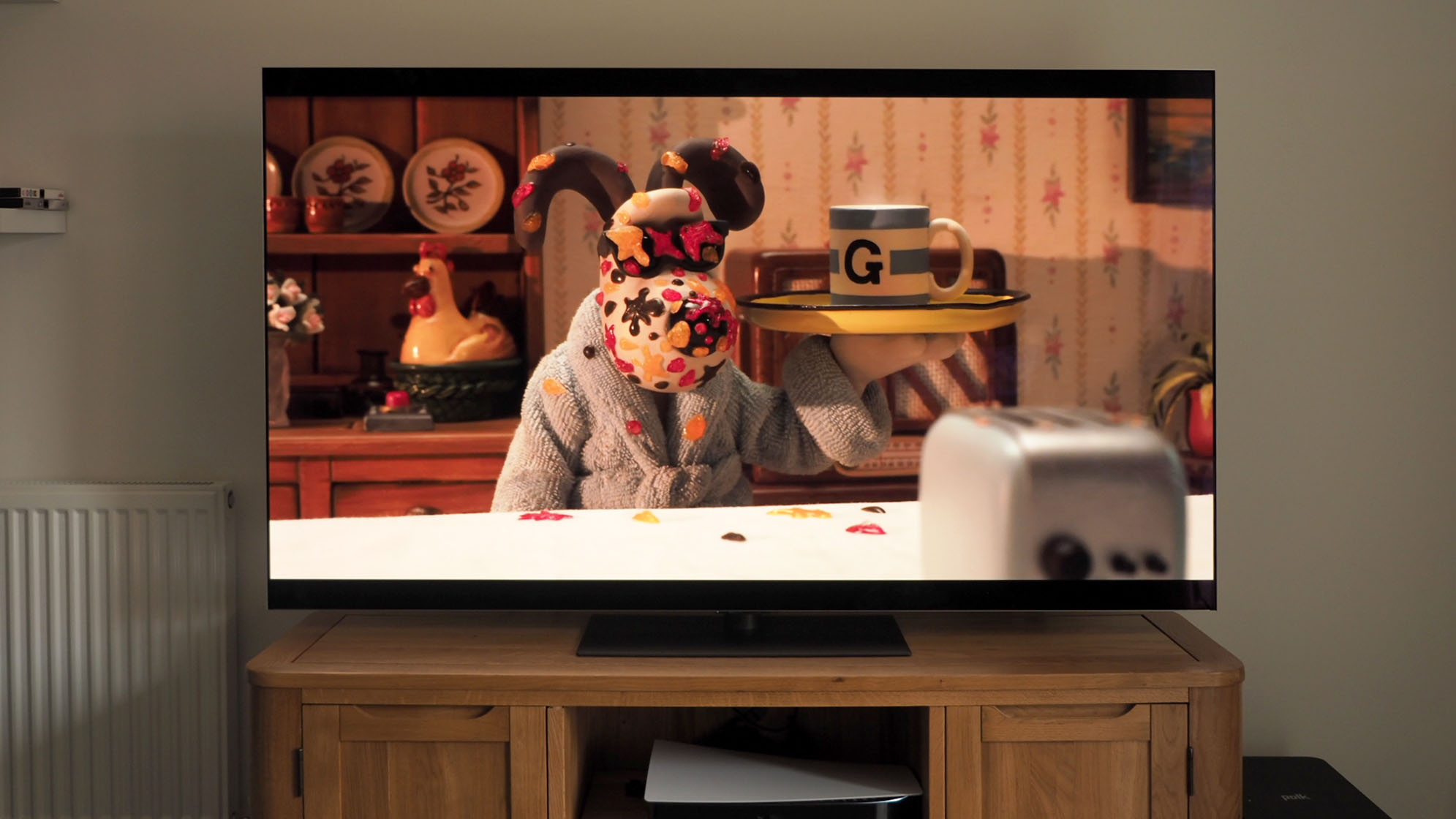
LG's flagship OLED always draws high praise – and the OLED G5 is the pinnacle of classic OLED performance. Sure, the sound is a little thin – correctable with a soundbar – and the new remote's layout is perplexing, but that's all nitpicking against one of 2025's most impressive TVs. Whether you're watching TV or movies, or putting your hand to gaming, the OLED G5 is a master at all without compromise. The generational leap in brightness is impressive, but it's the naturalistic pictures and unmatched black-level control that delivers pictures so sumptuous that they'll be hard to beat by any flagship – OLED or otherwise.
-
+
Super-bright image quality with impressive trademark black-level control
-
+
Superb for gamers thanks to 4x HDMI 2.1 ports (4K 120Hz/165Hz for future-proofing)
-
+
Stand-mount or wall-mount options available (not in US – stand sold separately)
-
-
Sound profile remains fairly thin – you'll want a soundbar/system
-
-
So much picture control that you can overdo things up by excess tinkering
-
-
New remote's focus on AI and ThinQ rather than quick access to input sources feels ill-conceived
Why you can trust T3
I've been reviewing the best OLED TVs for many years – and every once in a while a technological shift comes along that's an extra-special upgrade. The LG OLED G5 represents such a shift, as I've learnt from my two weeks living with this flagship set.
Indeed, the G5's new multi-layer OLED technology – which replaces the MLA (Micro Lens Array) type of its outgoing G4 predecessor – is so bright that being able to sensibly photograph this set for review became a sort of joyous nightmare.
There's plenty of picture control, though, so if you want eye-blistering peaks for your gaming sessions – which is best supported thanks to four HDMI 2.1 ports and processing that future-proofs for 165Hz – or to select Filmmaker mode for perfect home cinema visuals, the OLED G5 does it all. And then some.
It'll be an unsurprising spoiler, therefore, that the top-tier OLED G5's picture is of 5-star quality. The same can't be said of its sound, though, such is the nature of a super-slim set design. And I'm somewhat perplexed by the new AI and ThinQ layout of the remote – but that's small-fry nitpicking against what's otherwise a stellar OLED TV for 2025.
How much does LG's G5 OLED cost?
The LG OLED G5 is available now, with that new multi-layer panel type and its brightest output capabilities available in sizes from 55-inch to 83-inch. I have the 65-inch model on review, which you can see in my review pictures.
There's a new 48-inch model, too, which also adopts the new panel type – but it's not quite as bright (and 144Hz limited). The 97-inch model, meanwhile, doesn't offer the new panel type, so it's less bright again (nor does it adopt MLA – so it's akin to an LG OLED G2 with new processing power – up to 120Hz maximum).
You can see live pricing in the shopping widgets above, but for the launch day 2025 pricing I've constructed a quick-glance table below for reference. Year-on-year pricing versus the OLED G4 predecessor's initial pricing is identical in most instances, where applicable.
| Header Cell - Column 0 | UK £ GBP | US $ USD | AU $ AUD |
|---|---|---|---|
48-inch (OLED48G56LS) | £1,799 | N/A | AU$TBC |
55-inch (OLED55G56LS / OLED55G54LW / OLED55G5WUA) | £2,399 | $2,499 | AU$TBC |
65-inch (OLED65G56LS / OLED65G54LW / OLED65G5WUA) | £3,299 | $3,399 | AU$TBC |
77-inch (OLED77G54LW / OLED77G4WUA) | £4,499 | $4,499 | AU$TBC |
83-inch (OLED83G54LW / OLED83G5WUA) | £6,999 | $6,499 | AU$TBC |
97-inch (OLED97G5WUA) | £24,999 | $24,999 | AU$TBC |
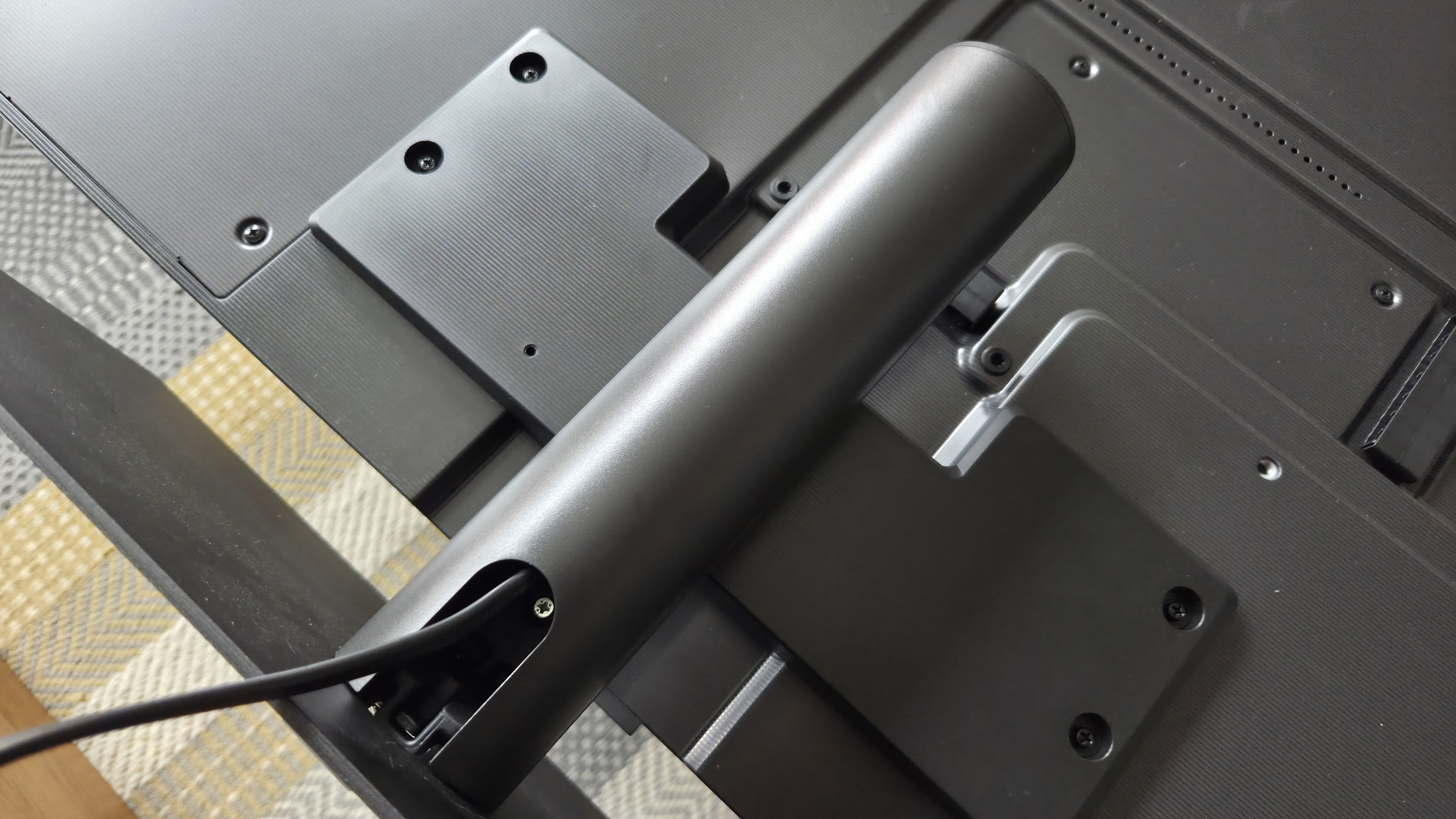
As you can also see, I've included model numbers in that table. Note that for the UK market a 'W' at the end refers to a wall-mount in the box, while 'S' refers to stand-mount being included.
In the USA the 'WUA' models are designed for wall-mounting only, but you can purchase a sold-separately stand if you prefer. The 48-inch model, however, seems absent from this market. Australia is all to-be-confirmed at the time of writing.
LG OLED G4 vs G5: What's New?
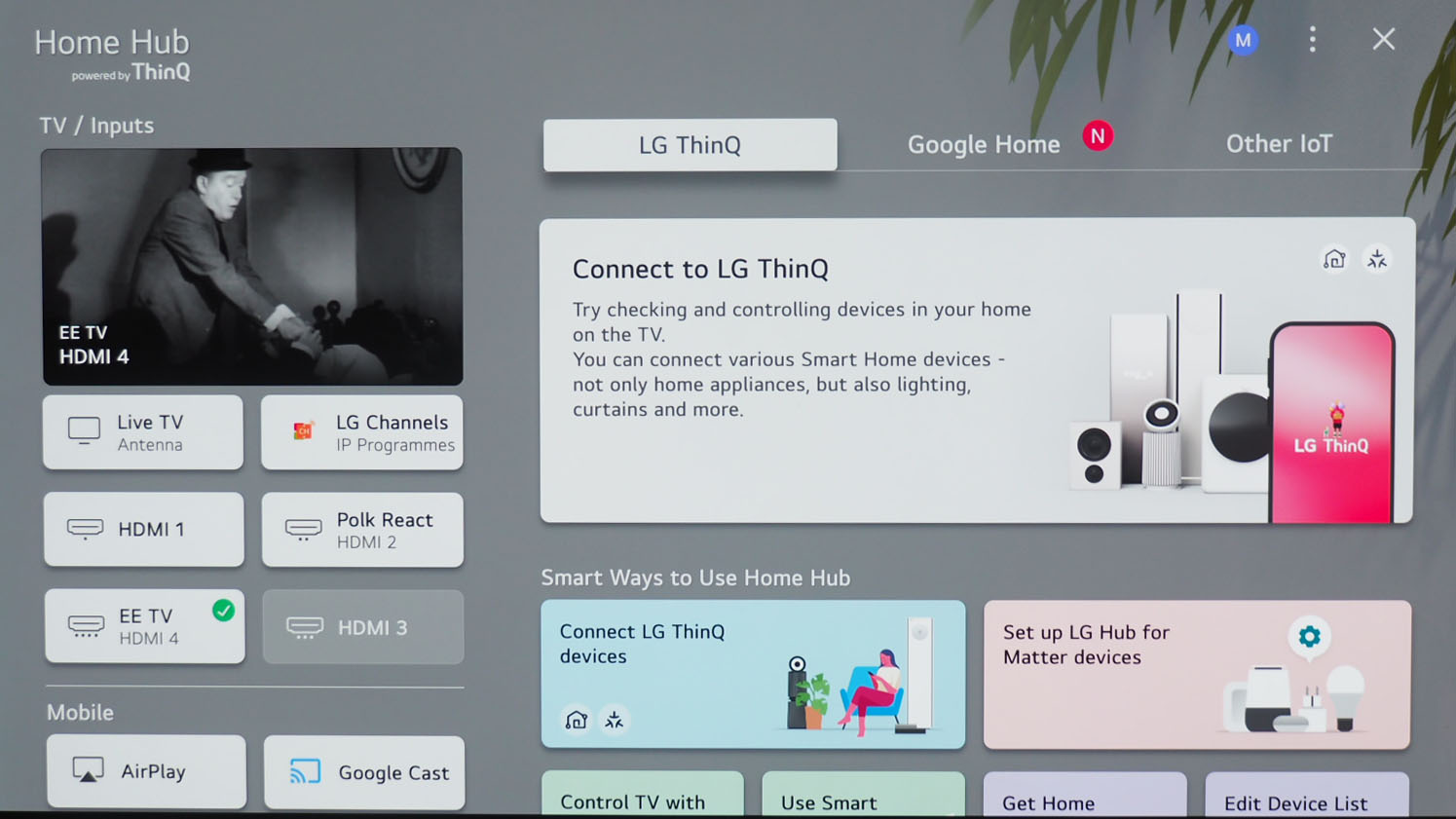
As I've mentioned, the key difference in the G5 versus the G4 predecessor is a totally new four-layer stacked OLED panel type. LG calls it 'Brightness Booster Ultimate' (not so for the 48- and 97-inch models, though) which can offer a 40% brightness lift generation on generation.
Powering everything behind the scenes is the Alpha 11 4K AI Processor Gen 2, which brings some new artificial intelligence enhancements. There's AI upscaling, genre and scene recognition, dynamic tone mapping improvements, and even object enhancing processing to enhance depth-of-field perception.
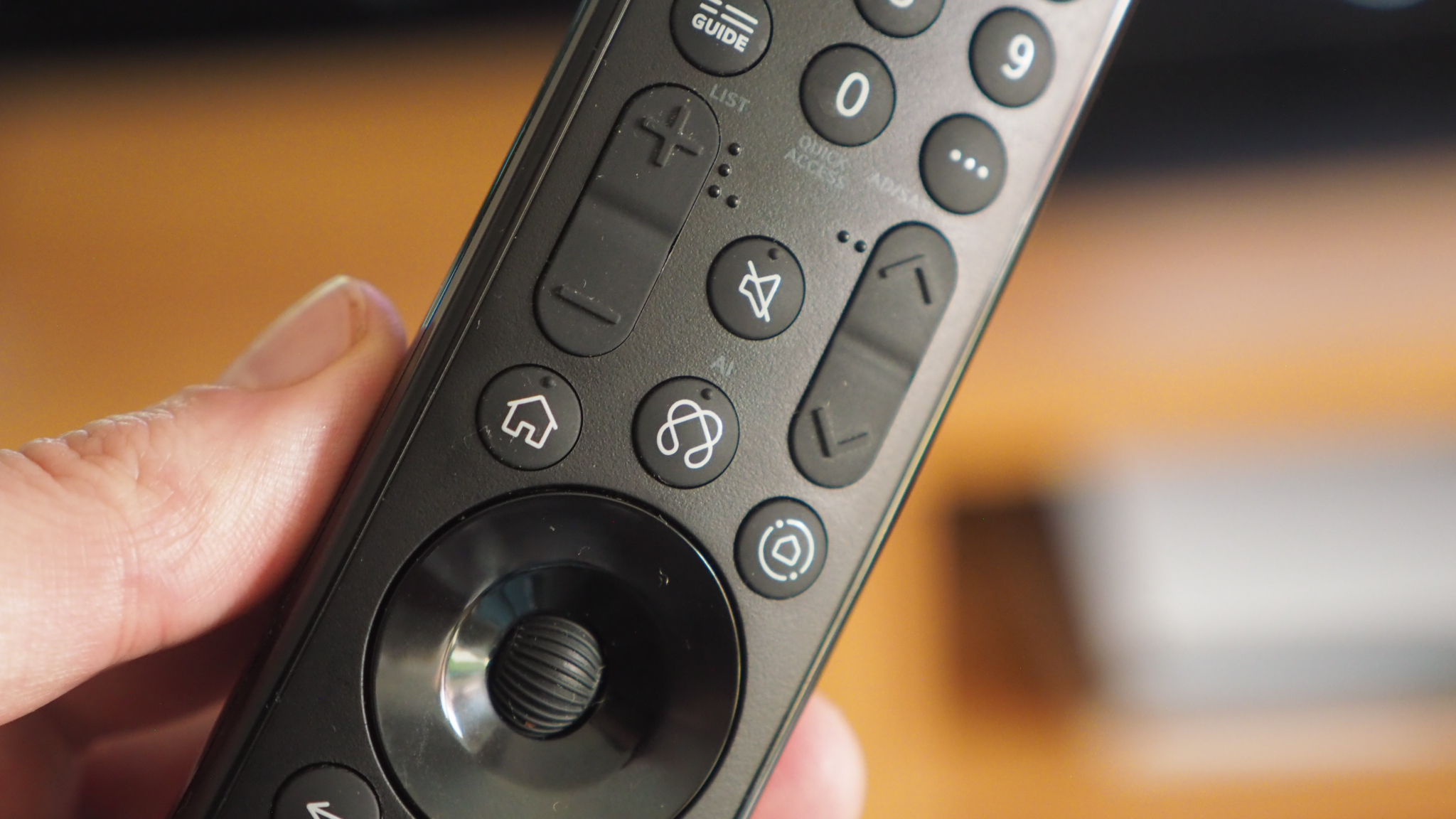
The included remote also gets a minor overhaul, with the microphone button replaced by an 'AI' one (centre position, see image above) to engage with the built-in chatbot, while the source input button has changed to an LG ThinQ one (right position, below channel down).
However, I've found the chatbot of little use when manually opening it in the webOS operating system – you can ask it to make quick adjustment settings via voice – and the ThinQ method of accessing source inputs is frustratingly slow (the press-and-hold method to bring up the HDMI sources is just ill-conceived – a single-press button would be far more convenient).
I get the idea to have the TV act as a home hub – with control of Matter and Google Home products, as applicable – but it's yet another layer to have to engage with. It feels like a clashing implementation rather than a harmonious one if you ask me – but software updates could refine this in the future.
How good is the LG G5's webOS system?
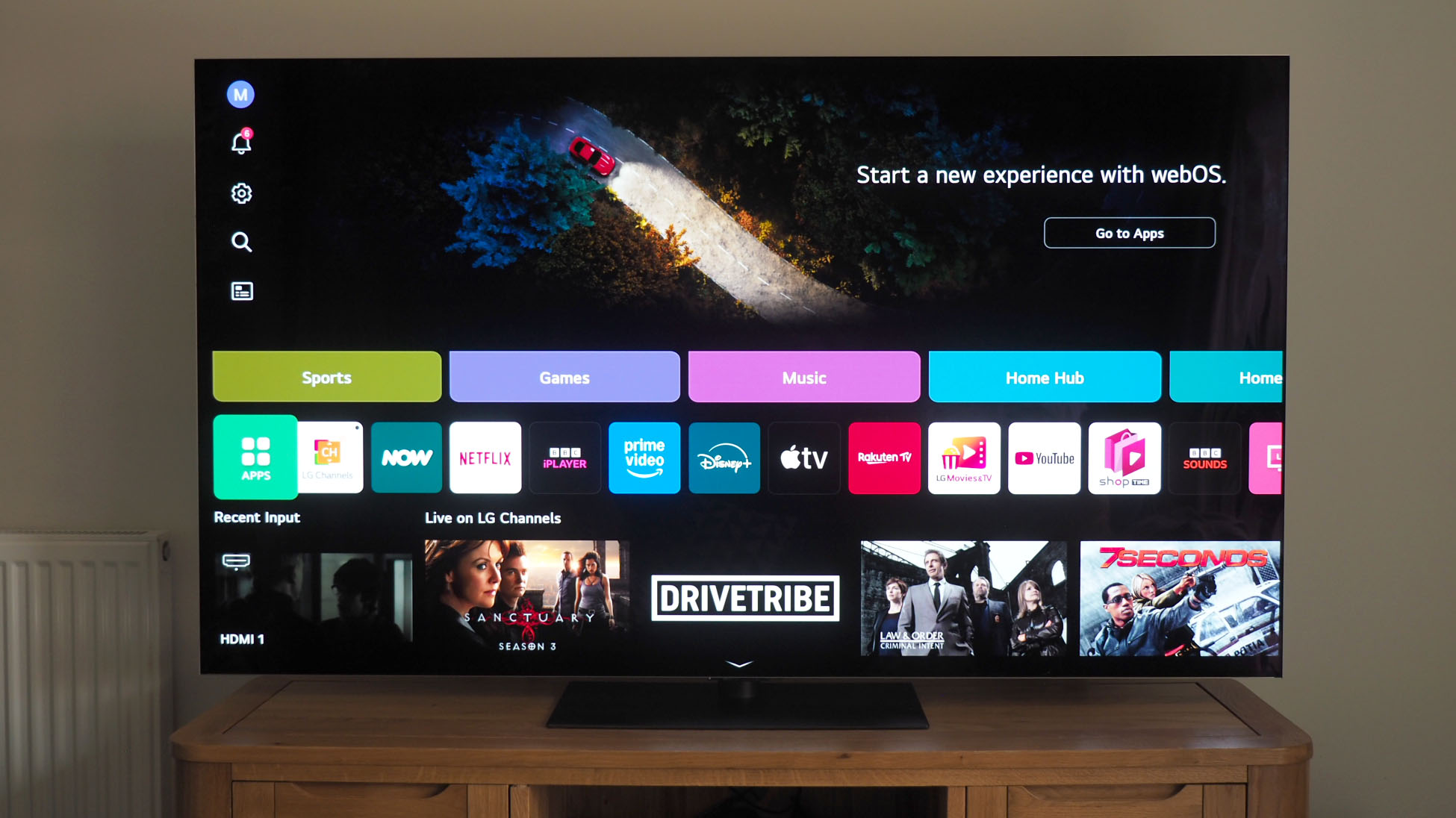
The latest webOS 25 system does have a nicely thought-out take on users, though, with voice recognition allowing multiple family members to have their own profiles, preferences, layouts and picture type preferences – which you can also setup using an AI wizard.
The concept of this AI setup – picking a series of 'favourites' from visual prompts – is logical, but I've not found its application all that practical thereafter. The 'one size fits all' doesn't work for picture quality, really. Using AI to recognise content works better in my view – which, I must add, the G5 can and does do – especially when it comes to, say, recognising a 4K Blu-ray player's source and automatically shifting to Filmmaker Mode.
For 2025, webOS brings a fairly considerable shift in how LG is undertaking its own channels access. There's no underlying Freeview Play/Freesat HD here, for example, with webOS being your one-stop shop for all content. You can still source from aerial or sat input though.
I was worried this could be a problem, but webOS 25 has already got all the key access to relevant apps – such as BBC iPlayer, Netflix, etc – and it can handle aerial/sat inputs via its own Channels if you're not using a set-top box.
The layout is customisable, I just wish that giant ad space at the top of the screen would be reworked and that space more user beneficial.

While the software makes jumping between input sources slower than in previous LG OLED TVs, as I've mentioned, there's no question on the quality of the hardware here – with four HDMI 2.1 ports on the back.
That's a key LG win, because the company makes its own chips. Many competitors only offer two HDMI 2.1 ports, for example, which effectively limits the flagship capabilities from as many sources. Especially as the eARC port is typically used up by adding one of the best soundbars for LG TVs.
Not so for the LG OLED G5. Paired with the Gen 2 AI processor, you've got 4K Dolby Vision at up to 144Hz from any of those ports (165Hz is supported for non-DV via VRR). That 165Hz support for PC gamers isn't something I've used, but it's the current highest standard a TV offers in 2025. I'm already convinced the G5 could be the best gaming TV this year.
Does the LG OLED G5 deliver the best TV picture quality?
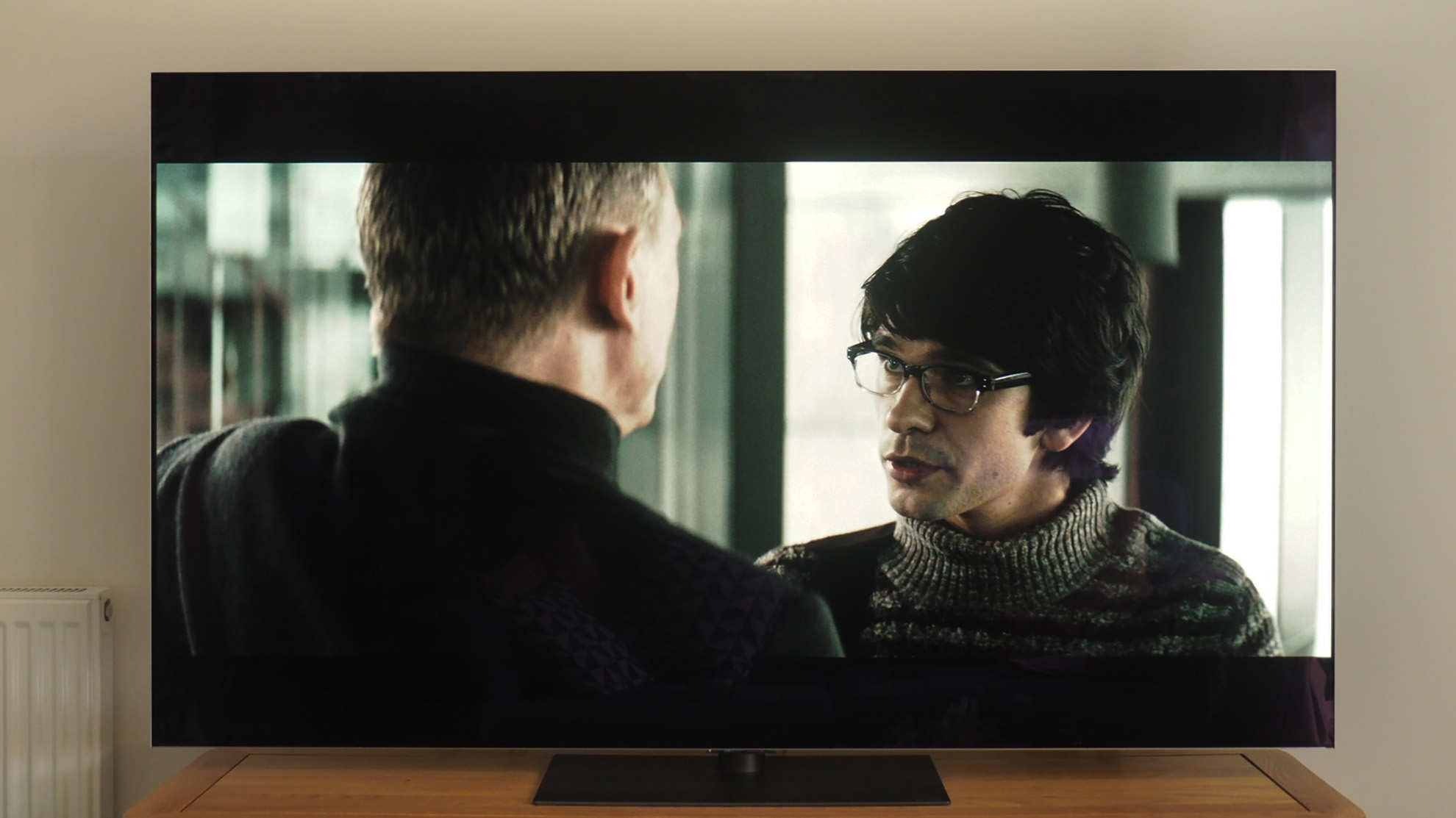
The real reason you'll want to buy the LG OLED G5? The picture quality. It's universally excellent for TV, cinema and gaming.
Sure, you can overcook things in the myriad settings on offer – or go to town in the AI Picture Wizard to ill effect – but as there's a profile per source, you can tinker your set-top box from your gaming console from your Blu-ray player and have everything looking just perfect.
The most apparent thing I've found since upgrading from one of the best Philips TVs, is the LG's additional brightness. While many brands ham up the increase in brightness, sometimes the real-world result – where it's not measured on a tiny window – is less prominent.
But with the LG OLED G5, from the minute I've been watching, that added brightness has been almost painfully brilliant. But not with any of the backlighting 'risk' of a Mini-LED set – this is OLED, after all, so each self-illuminating 'pixel' gives perfect contrast.
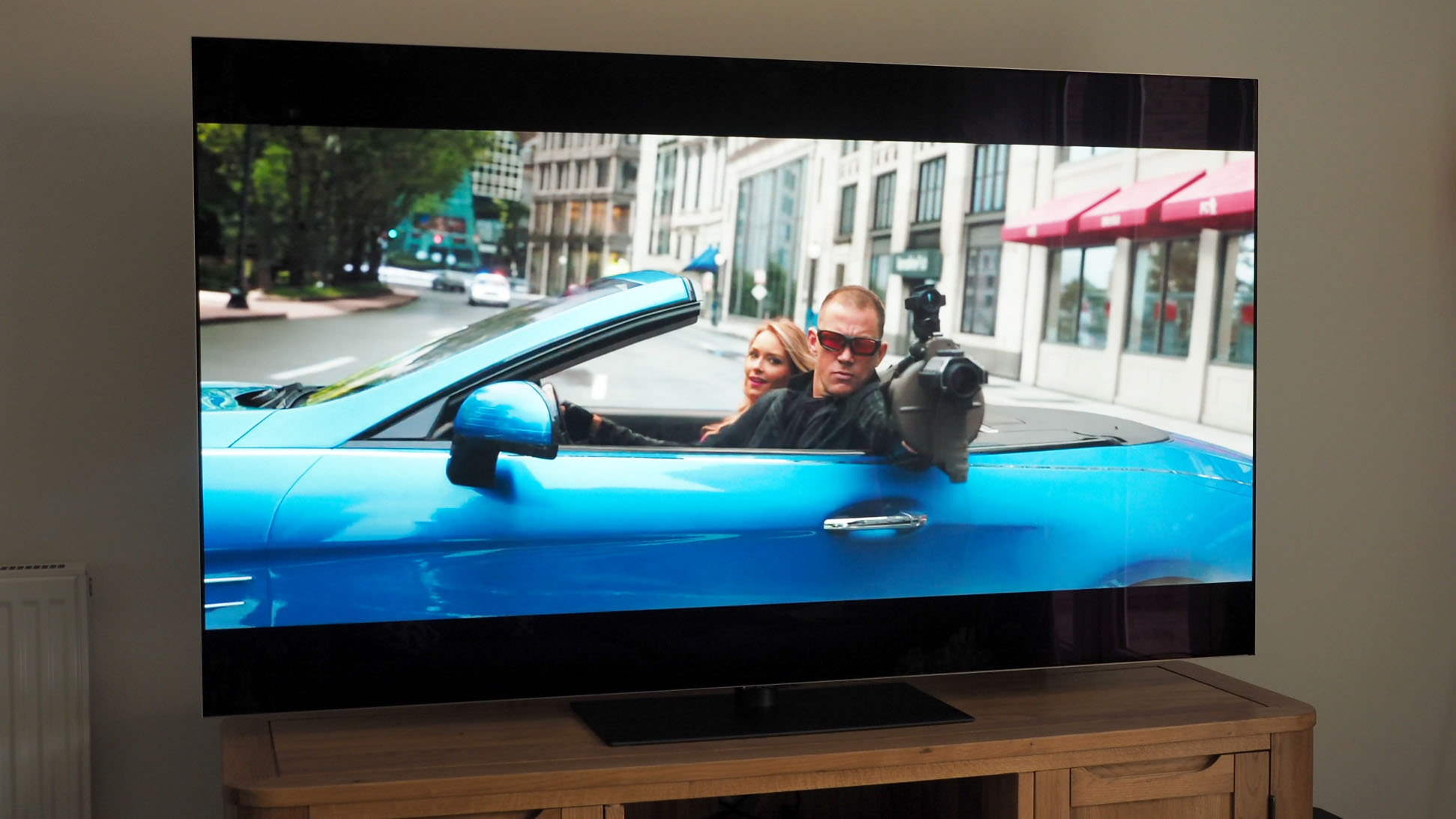
Just as I found with the previous LG G4, a little tweaking to your preferences will squeeze even more picture quality delight out of the set. There are plenty of presets, of course, so you can quickly adapt for motion in Sport, say, or keep those deeper, darker scene looks in movies using Cinema Pro or Filmmaker Mode.
Much as I love the punchy brightness, it's often in those darkened scenes when the G5 looks its utmost best. With Filmmaker Mode now offering Dolby Vision but with Ambient Light Correction – i.e. it adapts to ambient light in the room – I'm not sure it's truly the same mode anymore. I preferred sticking to the mode proper, rather than letting the TV adapt to light levels.
And what wonder there is in those super-dark tones. This new panel offers Perfect Black tech – able to deliver black levels of just 0.24 nits, in the context of over a 2500 nits peak – which gives the set so much dynamic range from top-quality sources. There's also Perfect Color tech to maintain more accurate, realistic colours whether at their darkest or brightest.
LG's got its OLED down to an art form now, ultimately, with clarity, brightness, colour, depth and realism that's hard to beat. The OLED G5 just does that with even greater brightness peaks, without throwing off the nuance of black levels – which is so important for OLED.
How does the LG OLED G5 sound?
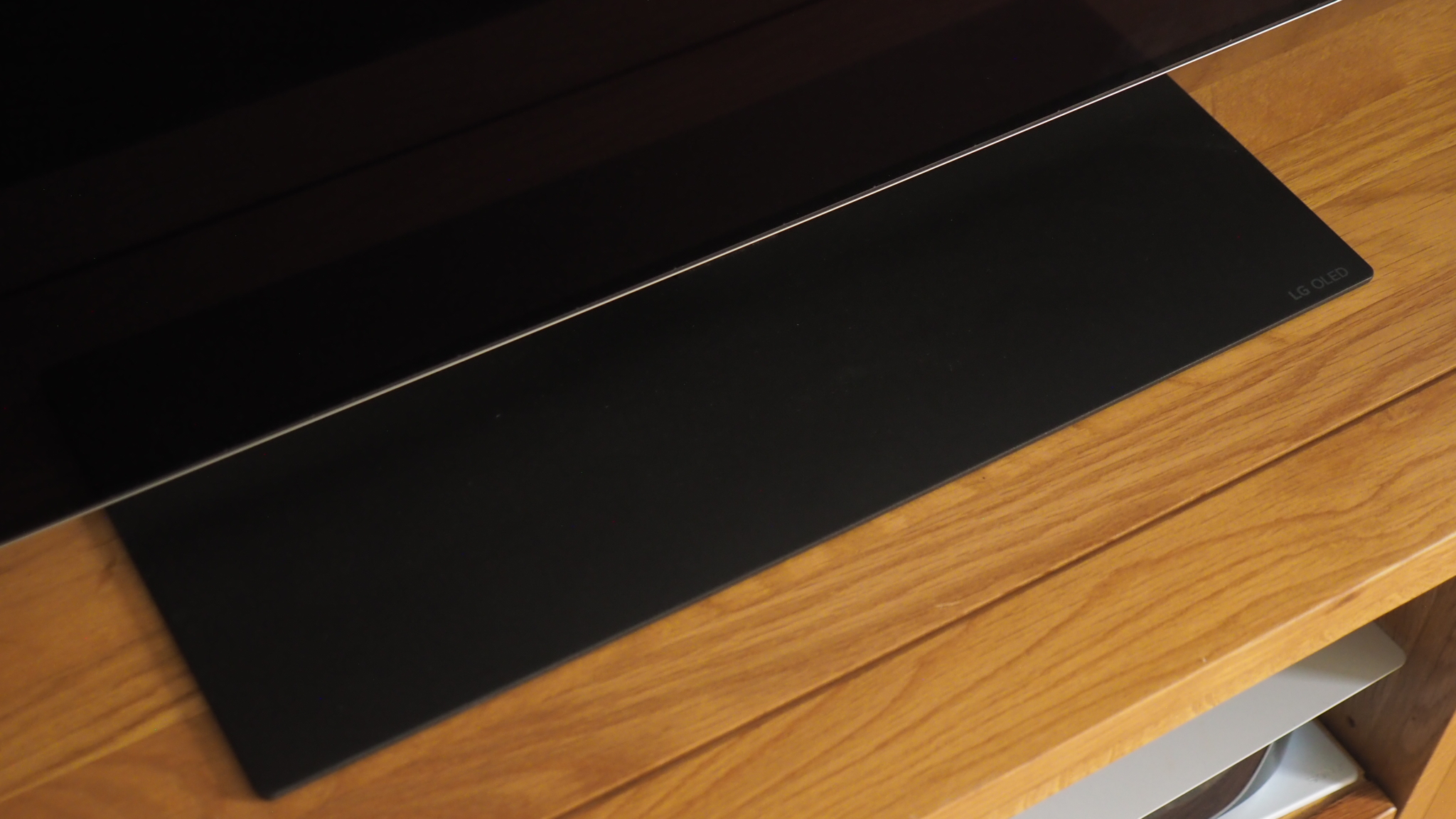
While the picture is out-of-this-world good, however, the sound quality isn't up to the same standards. But who'd be surprised by that, given the slender nature of this set? It's just a little washy.
With the stand-mount in place – for this review I've got the ST-G4SN65 pedestal, as also fits the G4 – there's only one height available, which gives just about enough space for a soundbar to sit in front without disrupting image quality.
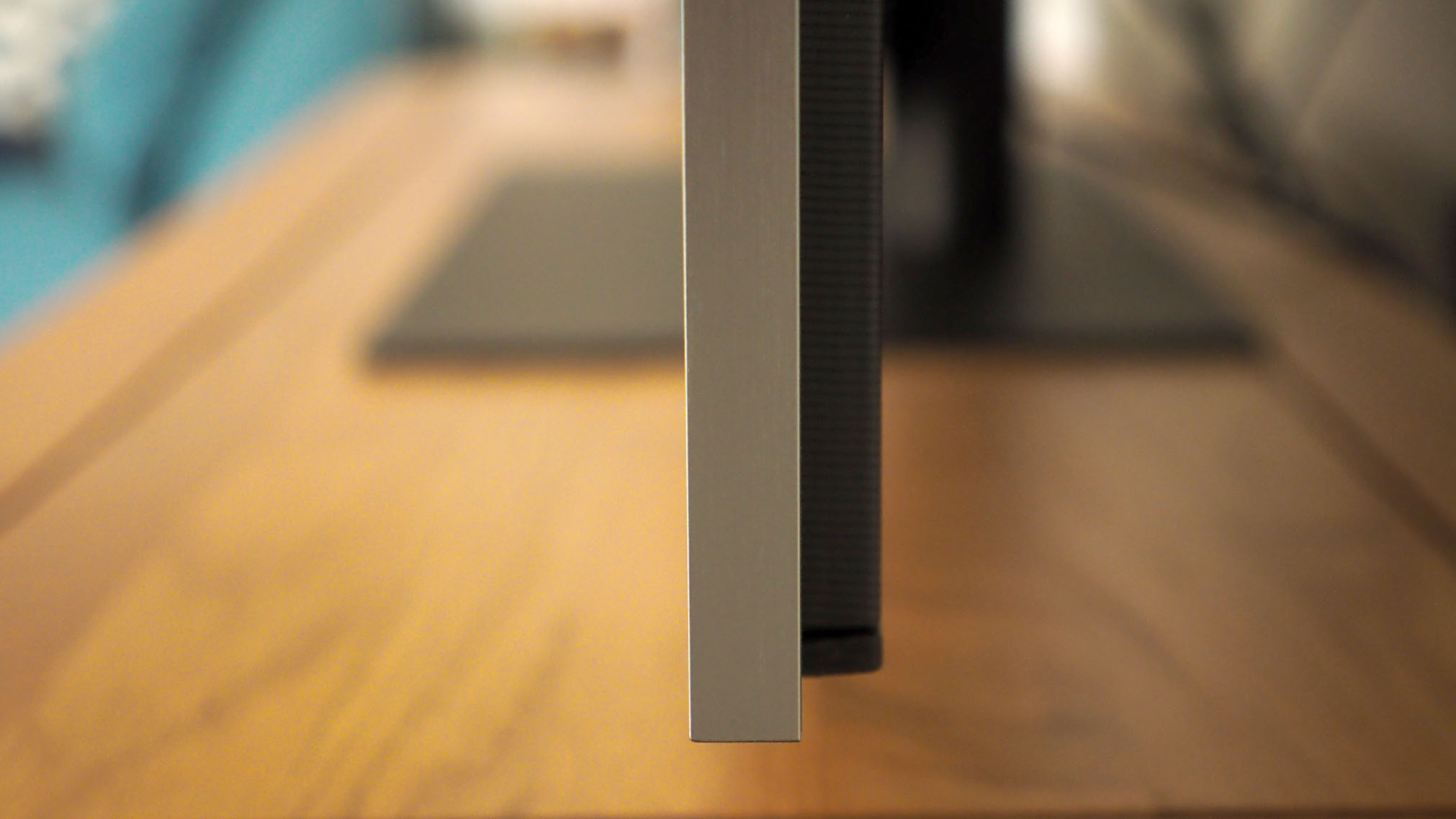
I'm not saying that LG hasn't improved sound generation over generation, as the G5 purports to deliver better-controlled bass, plus there's an AI Sound mode to enhance audio based on source. But it's still just 'sound from a telly' levels.
Fortunately, LG makes some of the best soundbars. And if you're investing in a TV of this calibre, then you need to do yourself a service and ensure that sound is up to the mark.
The LG S95TR is a stellar surround system, which also offers Wow Orchestra for integration with the TV's speakers. I used that for many months and was impressed. Otherwise the LG USC9S ought to fit as an audio booster that's stand integrated.
LG OLED G5 review: Verdict

LG's flagship OLED always draws high praise from me. From "TV doesn't get any better than this" to "a cinematic and gaming powerhouse" – all of that still applies to the LG OLED G5. Except it's now even better thanks to that brand new multi-layer OLED panel.
Is it perfect? Well, the picture quality is approaching unbeatable, with some minor caveats to the chosen processing. However, the biggest letdown from my point of view is the new remote's layout making source input changes more challenging. Oh, and the sound is still fairly thin – but as this is the peak of TVs, a soundbar accompaniment purchase is a given.
Overall, LG's generational leap with the OLED G5 is mighty impressive. It proves that classic OLED is still relevant in a world of QD-OLED and Mini-LED and, for my money, the naturalistic pictures and unmatched black-level control deliver pictures so sumptuous that I'm not sure they'll be beaten this year.
Also consider
That all said, there are a lot of rivals! The Samsung S95F, for example, is a QD-OLED option with a far better anti-reflection panel that'll suit bright rooms better. Or the Panasonic Z95B uses the same panel with a more intelligent heatsink for brightness benefit, and avoids the thin sound thanks to an integrated system – so it's a brilliant option.
Or, if you're sticking in LG's camp, are set on an OLED, then there's the cost factor to consider. You can likely find a decent deal on an LG OLED G4, for example, which remains an incredible option (with a less annoying remote layout at present). Or the OLED C5, a brightness step down, might be the best OLED option for most people – with still stellar image quality.
Sign up to the T3 newsletter for smarter living straight to your inbox
Get all the latest news, reviews, deals and buying guides on gorgeous tech, home and active products from the T3 experts

Mike is T3's Tech Editor. He's been writing about consumer technology for 15 years and his beat covers phones – of which he's seen hundreds of handsets over the years – laptops, gaming, TV & audio, and more. There's little consumer tech he's not had a hand at trying, and with extensive commissioning and editing experience, he knows the industry inside out. As the former Reviews Editor at Pocket-lint for 10 years where he furthered his knowledge and expertise, whilst writing about literally thousands of products, he's also provided work for publications such as Wired, The Guardian, Metro, and more.
You must confirm your public display name before commenting
Please logout and then login again, you will then be prompted to enter your display name.
-
 I can tell this new Netflix comedy series is going to have a sad twist
I can tell this new Netflix comedy series is going to have a sad twistThe Four Seasons will have light and shade
By Max Freeman-Mills Published
-
 Vollebak's Full Metal Jacket Gold Edition is equal parts luxury, science fiction and bio-armour
Vollebak's Full Metal Jacket Gold Edition is equal parts luxury, science fiction and bio-armourThe most luxurious survival jacket ever made? Possibly.
By Matt Kollat Published
-
 Kenwood's latest matching toaster and kettle sets are a must-have for spring decor lovers
Kenwood's latest matching toaster and kettle sets are a must-have for spring decor loversStylish without the hefty price tag
By Lizzie Wilmot Published